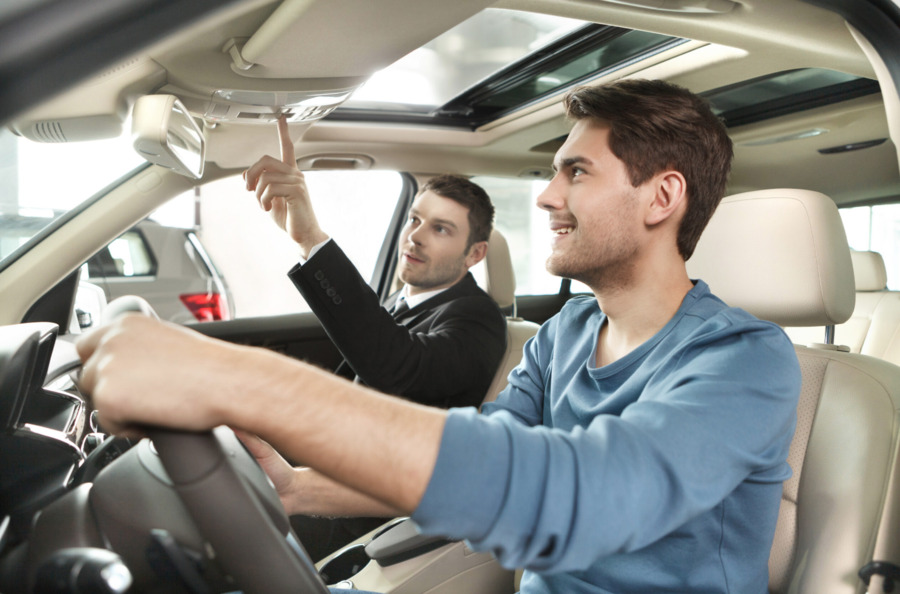Introduction to Car Safety
When selecting a personal vehicle, potential buyers often weigh a variety of factors including design, comfort, power, fuel consumption, and critically, safety. Car safety systems are paramount as they significantly reduce the likelihood of accidents and lessen the severity of their consequences. By understanding the various safety systems equipped in modern vehicles, consumers can make well-informed decisions that enhance their safety on the road. Car safety mechanisms are generally divided into two categories: passive and active systems, each playing a crucial role in vehicular safety management. Additionally, this knowledge is especially valuable for those considering budget car rentals, as it helps ensure that cost-effective choices do not compromise on safety standards, allowing renters to feel secure in their vehicle selection while adhering to a budget.

Detailed Insights into Passive Safety Systems
Passive safety systems are engineered to minimize injuries in the event of an accident and activate only when a collision occurs. Their primary purpose is to shield occupants from serious harm:
Body and Doors
The structure of the vehicle, including its body and doors, is designed to absorb and dissipate the kinetic energy during a collision, which minimizes the impact felt inside the cabin and prevents more severe injuries.
Seat Belts
As a fundamental safety feature, seat belts secure occupants in their seats during a crash, significantly reducing the risk of collision with internal elements or ejection from the vehicle.
Head Restraints
Integrated into each seat to prevent neck injuries, such as whiplash, especially in rear-end collisions, head restraints are a critical feature for protecting the cervical spine.
Steering Column
In modern vehicles, the steering column is built to collapse upon impact which reduces the risk of serious injuries to the driver’s chest and head.
Windows
Safety glass used in windows prevents them from shattering into dangerous shards on impact, thus protecting occupants from potential cuts and other injuries.
Airbags
Deploying rapidly upon impact, airbags expand to provide a cushion between the passengers and the vehicle’s hard surfaces, significantly reducing the risk of severe injuries.
Engine Rails
Engineered to crumple in a controlled fashion, these components absorb and deflect crash energy away from the vehicle’s interior, protecting occupants.
Child Car Seats
Specially designed for younger passengers, these seats are crucial for safeguarding children, as they are tailored to restrain and protect vulnerable bodies during a crash.
Each component of the passive safety system is vital for providing maximum protection during accidents, ensuring that the effects of any collision are as mitigated as possible.

In-depth Look at Active Safety Systems
Active safety systems, in contrast to passive ones, are designed to prevent accidents from occurring. They enhance the vehicle’s stability and the driver’s ability to maintain control:
Anti-lock Brake System (ABS)
Prevents the wheels from locking during emergency braking, allowing the driver to maintain directional control.
Emergency Brake Assist (EBS)
Detects when a driver initiates a sudden stop and automatically increases the braking force to maximize stopping power.
Traction Control System (TCS)
Reduces or prevents wheel spin during acceleration by adjusting the throttle or applying brakes to individual wheels, thus enhancing traction.
Brake Force Distribution (EBD)
Optimally adjusts the force applied to each brake, improving control and minimizing stopping distances.
Electronic Stability Control (ESC)
Detects and reduces potential skidding or loss of control by automatically applying brakes to individual wheels and adjusting engine power as needed.
Electronic Differential Control (EDS)
Balances power distribution across wheels during cornering, ensuring better grip and control.
Parktronic and Other Sensors
Assist in parking and low-speed maneuvers by detecting and alerting drivers to nearby obstacles.
Hill-start Assist Control (HAC)
Prevents the vehicle from rolling back on an incline by temporarily maintaining brake pressure.
Downhill Assist Control (HDC)
Maintains a controlled speed on steep descents, improving control and safety.
Pedestrian Detection Systems (PDS)
Utilize sensors and cameras to alert drivers to pedestrians, potentially preventing collisions.
Adaptive Cruise Control (ACC)
Automatically adjusts the vehicle’s speed to maintain a safe distance from traffic ahead, enhancing comfort and safety during longer journeys.
These active systems employ advanced sensor technology to continuously monitor the vehicle’s surroundings and dynamically intervene to prevent accidents.
Safety Evaluations and Ratings
Safety evaluations are crucial for assessing a vehicle’s safety capabilities. Esteemed organizations such as IIHS, NHTSA, EuroNCAP, and ADAC conduct thorough testing based on various criteria, including impact resistance, seat strength, and emergency braking. High-performing models like the Mercedes-Benz G-Class, Mazda 6, and BMW X5 undergo rigorous testing to meet stringent safety standards, ensuring they provide robust protection for their occupants.
Accessing Safe Vehicles in Dubai
For residents and visitors in Dubai, Al Mizan Car Rental offers a wide selection of vehicles equipped with the latest safety features, including the highly rated BMW X5 2021. The rental cost for this advanced and safe vehicle is 16,500 UAE dirhams per month, 5,100 UAE dirhams per week, and 800 UAE dirhams per day, providing an excellent opportunity for drivers to experience cutting-edge safety technology firsthand.
Understanding the detailed workings of car safety systems is crucial for anyone looking to purchase a vehicle or enhance their driving habits. By choosing vehicles equipped with advanced safety features, drivers can significantly contribute to safer roads for everyone.

Football fan, follower of Christ, audiophile, reclaimed wood collector and recent OCAD grad. Acting at the nexus of design and sustainability to craft experiences both online and in real life.
